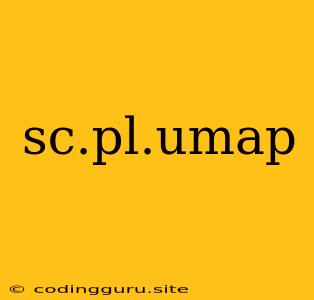UMAP: A Powerful Tool for Dimensionality Reduction
Dimensionality reduction is a crucial technique in machine learning, particularly when dealing with high-dimensional data. It allows us to simplify complex datasets by reducing the number of features while preserving important information. UMAP (Uniform Manifold Approximation and Projection) is a relatively new but highly effective algorithm for dimensionality reduction, gaining popularity for its ability to preserve both local and global structure.
What is UMAP?
UMAP is a non-linear dimensionality reduction technique that aims to find a low-dimensional representation of high-dimensional data while preserving its intrinsic geometric structure. Unlike other methods like PCA, UMAP does not assume a linear relationship between dimensions, making it ideal for complex datasets with non-linear relationships.
Why use UMAP?
There are several reasons why UMAP is a powerful tool for dimensionality reduction:
- Preservation of Global Structure: UMAP effectively captures the overall structure of the data, ensuring that distant points remain separated in the lower-dimensional space.
- Preservation of Local Structure: UMAP excels in preserving the local relationships between data points, ensuring that nearby points in the high-dimensional space remain close in the reduced space.
- Speed and Efficiency: UMAP is relatively fast and efficient, making it suitable for large datasets.
- Flexibility: UMAP can be used for a wide range of data types, including numerical, categorical, and mixed data.
How does UMAP work?
UMAP works by constructing a graph representation of the data, where edges connect nearby points. This graph captures the local and global structure of the data. The algorithm then seeks a low-dimensional embedding that preserves the distances and neighborhood relationships in the original graph. This process involves two key steps:
- Constructing the Graph: UMAP uses a nearest neighbor approach to construct a graph representation of the data. Points that are close together in the high-dimensional space are connected by an edge.
- Finding the Embedding: UMAP uses a stochastic gradient descent optimization algorithm to find a low-dimensional embedding that minimizes a cost function based on the distances between points in the original graph and their corresponding positions in the embedding space.
Applications of UMAP:
UMAP has numerous applications in various fields:
- Data Visualization: UMAP can be used to visualize high-dimensional data in two or three dimensions, revealing hidden patterns and clusters.
- Feature Engineering: UMAP can reduce the number of features in a dataset, simplifying the learning process for machine learning models.
- Anomaly Detection: UMAP can be used to identify outliers or anomalies in the data.
- Clustering: UMAP can improve the performance of clustering algorithms by reducing the dimensionality of the data and preserving the underlying structure.
Example of UMAP:
Let's consider a dataset with 1000 data points and 100 features. Using UMAP, we can reduce the dimensionality to 2, allowing us to visualize the data in a scatter plot. In the visualization, we might observe distinct clusters or patterns that were not apparent in the original high-dimensional space.
Tips for using UMAP:
- Experiment with different parameters: UMAP has several hyperparameters, such as the number of neighbors, the minimum distance, and the metric. It's important to experiment with different parameter settings to find the best configuration for your specific dataset.
- Consider preprocessing your data: Data preprocessing, such as scaling or normalization, can often improve the performance of UMAP.
- Visualize your results: Always visualize the results of UMAP to ensure that the low-dimensional representation accurately reflects the structure of the original data.
Conclusion:
UMAP is a powerful and versatile tool for dimensionality reduction. Its ability to preserve both local and global structure makes it ideal for a wide range of applications in machine learning, data visualization, and other fields. By reducing the dimensionality of complex datasets, UMAP helps us gain insights, identify patterns, and simplify the learning process.
